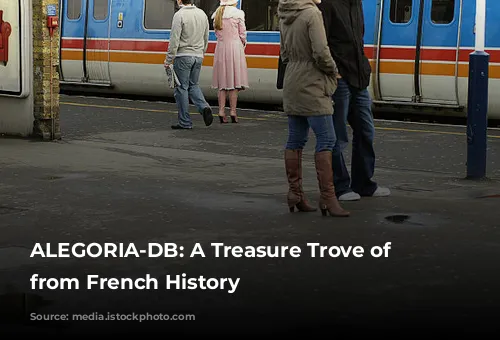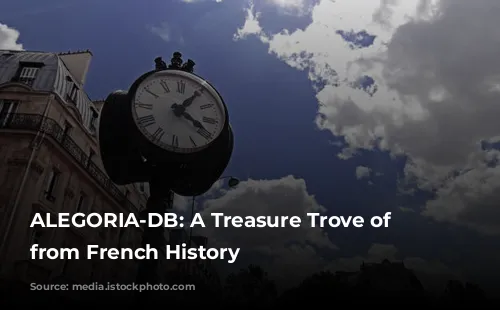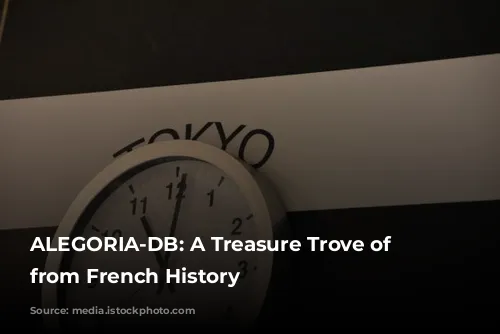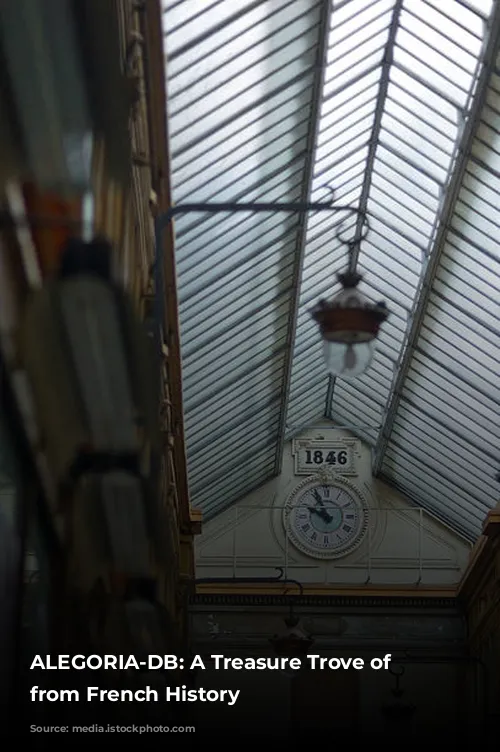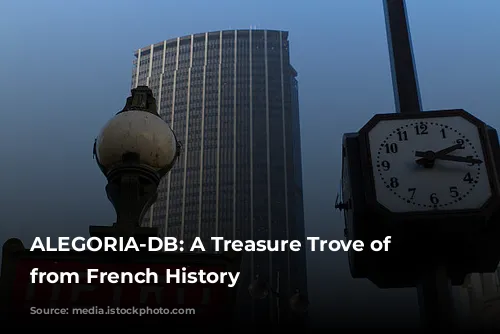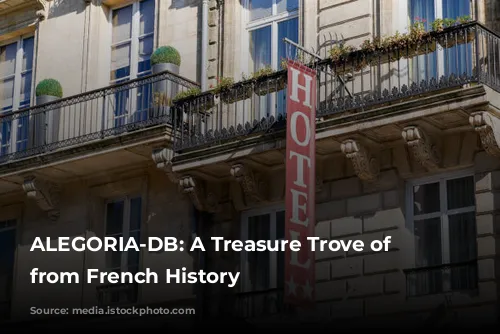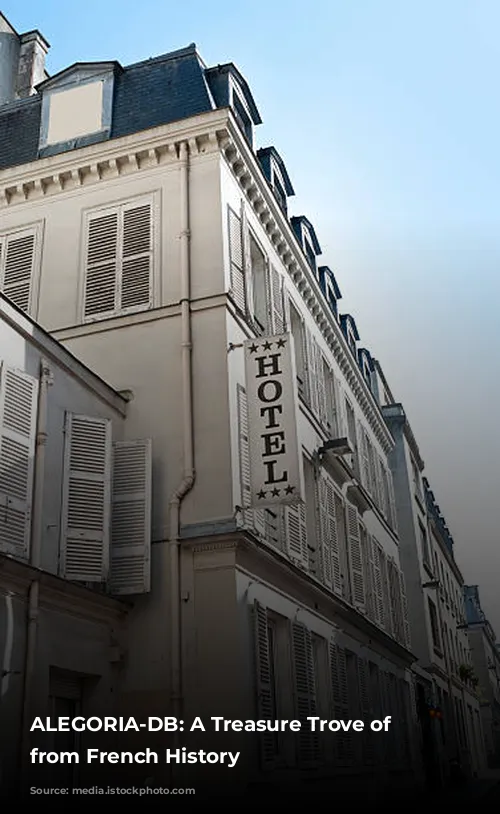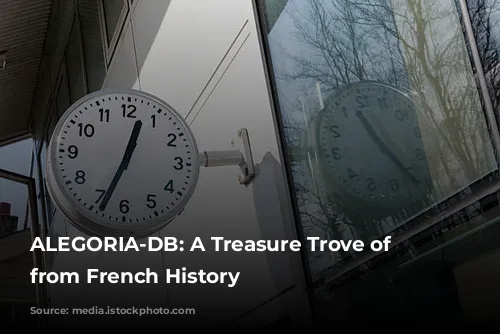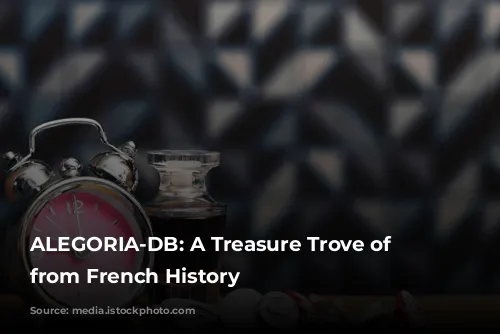Welcome to the ALEGORIA-DB benchmark, a vast collection of images that chronicles the changing landscapes of France, from the 1920s to the present day! This diverse dataset captures the beauty and evolution of French urban and natural scenes, offering a unique glimpse into the country’s rich heritage.

A Journey Through Time and Place
ALEGORIA-DB is more than just a collection of pictures; it’s a time capsule filled with images that tell stories. This collection includes a diverse range of multi-date, multi-source, and multi-view images, providing a comprehensive perspective on the transformations that have occurred over the years.
The dataset contains a total of 13,175 high-resolution images (800 pixels wide with variable height). These images are divided into two main categories:
- 1,859 query images: These images are organized into 58 classes, each representing a specific object or location in urban or natural settings.
- 11,316 relevant image distractors: These images are used to test the accuracy of algorithms designed to identify specific objects or locations.
One of the key features that sets ALEGORIA-DB apart is the manual annotation of each query image with quantized attributes. These attributes capture image variations, making the dataset ideal for evaluating algorithms that can handle these variations.

The Story Behind the Images
The ALEGORIA-DB dataset is deeply connected to the ARCHITRAVE research project. This project, focusing on the edition of travelogues by German travelers of the Baroque period, reveals fascinating insights into the artistic exchanges between Germany and France during this era.
The ARCHITRAVE website (https://architrave.eu/) offers additional information about the project’s content and objectives. The website also includes three visualizations created with Leaflet.js:
- Travel stops of five travelers on their way to Paris and Versailles: Follow the paths of these German travelers as they embarked on their journeys to the French capital.
- Sites in Europe mentioned in the six travelogues: Discover the wider geographical scope of these travelogues, extending beyond Paris and Versailles.
- Sites in Paris described by the six travelers: Explore the specific Parisian locations that captured the attention of these German travelers.
The ALEGORIA-DB dataset provides a comprehensive archive of images and associated data, facilitating the study of French urban and natural environments throughout history.
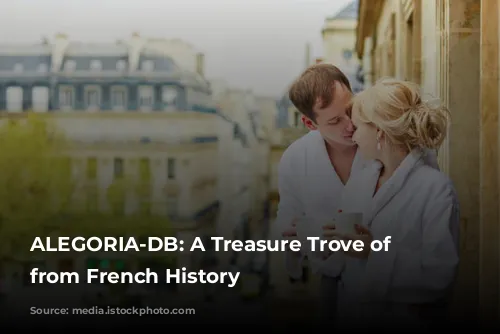
Exploring the Travelogues: A Window into the Past
The travelogues featured in the ARCHITRAVE project offer a unique perspective on the artistic and architectural exchanges between Germany and France during the Baroque period. These accounts, written by German travelers who visited Paris and Versailles, provide valuable insights into the cultural and intellectual landscape of the time.
Balthasar Neumann’s Letters: A Franconian Architect’s Observations
Balthasar Neumann, a prominent Franconian Baroque architect, traveled to France in 1723 to present his plans for the Würzburg Residence to Robert de Cotte, the first royal architect. His letters, written to his employer, the Prince-Bishop of Würzburg, reveal his diplomatic skills and provide a fascinating glimpse into his interactions with French architects.
Neumann’s letters reveal a complex interplay of admiration and resistance towards French architectural ideas. While he readily acknowledges the beauty of French interior decoration and decorative arts, he also maintains his own distinct artistic vision. His letters offer valuable insights into the evolving relationship between German and French art and architecture during the Régence and early reign of Louis XV.
Leonhard Christoph Sturm’s Critical Eye
Leonhard Christoph Sturm, a German architectural theorist and strict pietist, offers a refreshingly critical perspective on French art and architecture in his publication. His work reflects the growing competition between Germany and France during the High Baroque period, extending beyond the political and military realms to encompass cultural spheres.
Sturm systematically examines the widely admired French model, subjecting it to scrutiny and even “correction”. His critiques are rooted in his belief in the irrefutability of mathematical principles and laws of proportion in architecture, derived from biblical revelation. His “Architectonische Reise-Anmerckungen” (Architectural Travel Notes) serve as a didactic textbook for aspiring German-speaking architects, offering both cultural and political insights.
Christian Friedrich Gottlieb von dem Knesebeck’s Manuscript: A Lost Treasure
Christian Friedrich Gottlieb von dem Knesebeck’s travel journal, “Kurtze Beschreibung einer Tour durch Holland nach Franckreich, von Braunschweig” (Short Description of a Tour through Holland to France, from Braunschweig), is closely linked to Leonhard Christoph Sturm’s work. Knesebeck’s manuscript is believed to be a copy of Sturm’s compiled travel notes, providing a unique opportunity to trace the editorial processes that transformed raw observations into a published work.
The manuscript offers fascinating insights into art policy proposals and artistic critiques that were ultimately omitted from the published version of Sturm’s book. Knesebeck’s manuscript serves as a valuable resource for understanding the evolution of Sturm’s work and the artistic debates surrounding it.
Christoph Pitzler’s Notes: Early Observations of French Architecture
Christoph Pitzler’s notes, written in the mid-1680s during a stay in Paris, offer one of the earliest comprehensive surveys of French architecture under the rule of Louis XIV by a German architect. While not a master draftsman or critic, Pitzler’s notes are invaluable for the insights they provide into buildings and interiors that were not recorded by other travelers.
His meticulous descriptions and sketches capture a wide range of architectural details, including marble floors in the king’s Grand appartement at Versailles and the façade and floor plan of the Hôtel particulier in the Rue de l’Université. Pitzler’s detailed account of the Marly machine, a pumping station on the Seine, is particularly unique and offers a valuable glimpse into the technological achievements of the time.
Lambert Friedrich Corfey’s Hybrid Travelogue
Lambert Friedrich Corfey’s travel journal, while rooted in the tradition of humanistic travel descriptions, breaks new ground with its inclusion of personal observations and reflections. Corfey and his brother Christian Heinrich, who traveled with him, go beyond simply enumerating curiosities and Latin inscriptions to capture their individual impressions of the people, landscapes, and religious customs they encountered.
Corfey’s journal reflects the transition between late humanism and the early Enlightenment, blending traditional travelogue elements with more personal and introspective observations. This hybrid approach makes his journal a particularly rich and insightful source.
Ferdinand Bonaventura Count von Harrach’s Journal: A High-Ranking Nobleman’s Impressions
Ferdinand Bonaventura Count von Harrach’s journal, written in 1698, offers a unique perspective on French art and architecture from the standpoint of a high-ranking Habsburg nobleman and diplomat. His pragmatic approach to judgement, coupled with his refined eye for quality, allows him to provide astute observations on French art productions.
Harrach’s concise and matter-of-fact language enables him to offer critical yet respectful assessments of individual works of art. His access to princely palaces and private hôtels particuliers, due to his high social standing, provides a rare glimpse into these exclusive spaces.
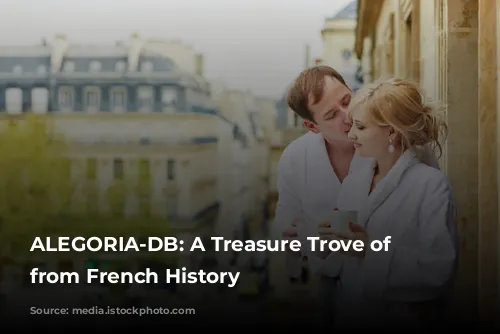
Conclusion
ALEGORIA-DB and the ARCHITRAVE project offer an invaluable resource for exploring the rich history of France and the evolving relationship between Germany and France during the Baroque period. The diverse range of images, travelogues, and visualizations provides a unique window into the past, capturing the beauty, dynamism, and cultural exchanges that shaped the European landscape. Through this incredible collection, we can witness the transformation of French cities and landscapes, experience the artistic dialogues of the time, and gain a deeper understanding of the individuals who contributed to this rich cultural heritage.
